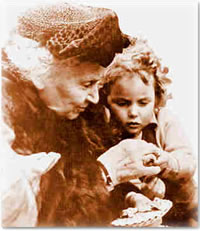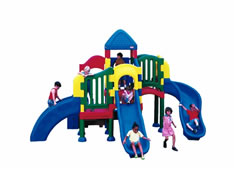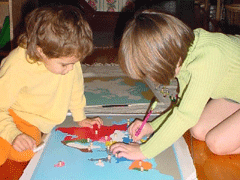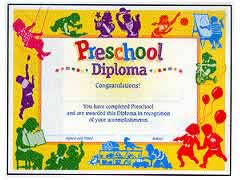Program Outline
Program Outline
 Our daily classroom objective at Leaside Children’s House is to provide freedom with discipline in a carefully responsive and prepared environment . Our classrooms have been carefully designed to meet the child’s need for observation, reflection and concentration as they work and play.
Our daily classroom objective at Leaside Children’s House is to provide freedom with discipline in a carefully responsive and prepared environment . Our classrooms have been carefully designed to meet the child’s need for observation, reflection and concentration as they work and play.
The teachers plan learning experiences that promote integrated learning and that allow children to handle, explore and experiment with Montessori materials and other educational manipulative materials consistent with the Montessori philosophy that are both familiar and challenging.
Leaside Children’s House combines the challenging, individualized Montessori method of education and areas of study which include: practical life, sensorial, language, math and cultural studies with fun and creative activities to provide a balanced program. Along with the rich Montessori curriculum we also provide traditional early childhood education practices which include: story writing, French, social studies, science, sensory and discovery, creative arts, dramatic arts, music, and physical education. Cooking, special trips and special visitors are also included to round out and enrich the program.
Our preschool/kindergarten program and expectations are designed to prepare the children for the new Ontario Curriculum set out by the Ministry of Education. To learn more about Learning Expectations visit www.edu.gov.on.ca
Additional Features
Additional Features Holidays and School Closings
 Two healthy snacks and a hot meal will be provided daily. Our location offers a very spacious outdoor playground area. We also operate a summer camp in the summer months. Please refer to our Summer Camp Brochure for more information.
Two healthy snacks and a hot meal will be provided daily. Our location offers a very spacious outdoor playground area. We also operate a summer camp in the summer months. Please refer to our Summer Camp Brochure for more information.
We are fully licensed by the Ministry of Community and Social Services and follow the guidelines and regulations outlined in The Day Nurseries Act of Ontario. We meet all necessary local and provincial fire, health and safety regulations.
Schedule
We are open from 7:30 a.m. – 6:00 p.m. year round.
In our toddler program we offer 5 full days.
In our preschool (casa) program we offer 5 full days.
Holidays and School Closings
Leaside Children’s House observes the following statutory holidays:
- Thanksgiving Day
- Good Friday
- Easter Monday
- Victoria Day
- Canada Day
- August civic holiday
- Labour Day
The school will also be closed for:
- Christmas – which is approximately two weeks from mid-December to early January
- March Break – this will be a one week dosing which will coincide with the Toronto District School Board.
While the school will be closed on all statutory holidays, full fees are payable for the month in which these holidays fall. This policy also applies to the Christmas/Winter holiday and March Break.
There are no deductions given for days when a child is sick or on vacation.
Individual Needs
Meeting Children’s Individual Needs
 “Help me do it myself”
“Help me do it myself”
Our unique program encourages children to learn at their own pace. The toddler class age ranges from 12 months to 30 months. The preschool class ages ranges from 2 ½ to 6 year olds.
A mixed-age group working together provides indirect preparation for younger children, who watch and begin to absorb the activities they will be doing later, and it helps the older children realize their progress when they see younger ones attempting things that they themselves mastered some time ago.
The general social atmosphere of a mixed age group benefits from children helping and learning from one another, as it becomes a fact of life that some people are more experienced in some things, but that everyone needs a little help from others.
By recognizing individual needs and learning styles teachers adjust teaching methods and materials to promote a successful learning experience for each child. Children also benefit from class, small group and individual lessons, learning to share, take turns and listen to others. Teachers ensure that there is a balance between teacher-initiated and child-initiated activities.
Creating a classroom for every child:
Gardner’s Theory of Multiple Intelligences
“The Multiple Intelligences Theory is a scientifically supported system of classifying human abilities, and suggestions about how to encourage learning in ways that respect the individual interests and strengths of children. This theory in early childhood classes usually offers a greater variety of materials and helps ease children into materials which they may find threatening.”
Howard Gardner
Listed below are Gardner’s Theory of Multiple Intelligences and some ideas on how teachers here at Leaside Children’s House nurture these “intelligences”.
MUSICAL – The ability to produce and recognize simple songs; play with these melodies, varying speed and rhythm.
How we nurture these abilities: We incorporate music daily. We use a tape recorder for listening, singing along, and recording songs and rhythmic and melodic instruments.
LOGICAL/MATHEMATICAL – The ability to understand the basic properties of numbers, adding or subtracting; appreciate principals of cause and effect, one-to-one correspondence; ability to predict (such as which objects will float, sink, etc.)
How we nurture these abilities: We provide manipulative to help children experiment with numbers; use simple machines to help children think about cause and effect.
INTERPERSONAL – The ability to understand other people and work effectively with them and to notice who plays with who at school, and why.
How we nurture these abilities: We give children lots of opportunities to talk about one another and their social interactions, and to problem-solve conflicts together; play games in which one has to figure out the knowledge or intentions of other players.
INTRAPERSONAL – The ability to understand things about oneself, how one is similar to, different from others; remind oneself to remember to do something; know how to soothe oneself when sad.
How we nurture these abilities: We let children express their emotions, preferences and strategies. We help them understand their own wishes and fears and how best to deal with them.
BODILY/KINESTHETIC – The ability to use the body or parts of the body to solve problems, as in playing a ballgame, dancing, or making things with the hands.
How we nurture these abilities: We provide opportunities for physical challenges throughout the day-not just outdoors.
LINGUISTIC – The ability to use language to express meaning, understand others, tell a simple story; react appropriately to stories with different moods; learn new vocabulary or a second language that is used naturally.
How we nurture these abilities: We make sure that we provide lots of language opportunities and that children’s linguistic expression is listened to and appreciated.
SPATIAL – The ability to be able to form a mental image of large (a home) and local (a block building) spatial layouts; find one’s way around a new building.
How we nurture these abilities: We provide many opportunities for mapping of the classroom and beyond. We explore new spaces and encourage children to vary the arrangements of materials in the space.
NATURALIST – The ability to recognize species of plants and animals in one’s environment; for example, to learn the characteristics of different birds.
How we nurture these abilities: We play games in which children recognize fine distinctions among members of a plant or animal group; explore the outdoors regularly and bring the outdoors in; provide books, visuals, and props related to the natural world.
“It is more important to discover areas of strength and to build on them than it is to fret too much about areas of weakness.”
Howard Gardner
Children's Progress
How Children’s Progress is Monitored
 Children’s progress is documented by anecdotal notes recording observation of important behaviors and by compiling portfolios of student work samples that are evidence of children’s progress. Information is communicated on a weekly / monthly basis via a weekly newsletter from each classroom. Regular meetings to discuss individual children will also be scheduled if needed. Children four and five years old in our full time program will be issued a report card that reflects expectations and outcomes outlined in the Ministry of Education’s Ontario Curriculum.
Children’s progress is documented by anecdotal notes recording observation of important behaviors and by compiling portfolios of student work samples that are evidence of children’s progress. Information is communicated on a weekly / monthly basis via a weekly newsletter from each classroom. Regular meetings to discuss individual children will also be scheduled if needed. Children four and five years old in our full time program will be issued a report card that reflects expectations and outcomes outlined in the Ministry of Education’s Ontario Curriculum.
Talented Teachers
Caring, Talented Teachers
2 teach is
+ 2 touch lives
4 ever
Our toddler class has a student teacher ratio of 5:1 and our preschool classes have a student teacher ratio of 8:1.
Leaside Children’s House’s staff are highly qualified, dedicated professionals who not only provide your child with a good education but also act as excellent role models. The teachers help to nurture good work habits, a sense of self worth, independence and leadership skills. We believe that a child’s relationship with a teacher is of the utmost importance in the development of each child’s self-esteem, confidence and attitude towards learning.
All our teachers have one or more of the following credentials:
Certified Montessori Teacher
Registered Early Childhood Educator
Certified Member Of The Ontario College of Teachers Certified Early Childhood Assistant
“Whoever touches the life of a child touches the most sensitive point of a whole which has roots in the most distant past and climbs toward the infinite future”.
Maria Montessori
“Intelligence is not enough. Intelligence plus character, that is the goal of true education”
Martin L. King, Jr.
Litany by Maria Montessori
To respect children – in return to be worthy of their respect. To praise much and blame little. To emphasize their successes and minimize their failures.
MAY LOVE AND UNDERSTANDING TEACH ME.
To make no promise to children that I cannot keep. To have unbounded faith in them. To know that they have great potential. To have the patience and wisdom to bring it forth. To allow children the dignity of their own personality and individuality. To refrain from making them over to our desire.
MAY LOVE AND UNDERSTANDING HELP ME.
To be cheerful and ready to smile and often to laugh. Children love and thrive on cheer.
As teachers, we have no right to inflict our moods on children. (Happiness is an outward sign of inward spiritual grace.)
To have infinite patience with children and to make allowances, knowing there is so much for them to learn and knowing that I myself am not so very wise.
MAY LOVE AND UNDERSTANING GUIDE ME.
To protect the child always from my nerves and from our own irritability, prejudice, pessimism, fears – showing and practicing in their presence only the opposites.
MAY LOVE AND UNDERSTANDING AID ME.
To help them choose their life’s work that they are suited for. To stir up the gift that is in them. To discover the talent or talents that they truly have – the inner pattern they came with.
MAY LOVE AND UNDERSTANDING LEAD ME.
To bring fresh energy into the schoolroom engaging all with keen alertness, interest and enthusiasm. To help children to meet life bravely, honestly, independently.
MAY LOVE AND UNDERSTANDING SHOW ME.
To give the children freedom and to never confuse liberty with license, as these two words are not synonymous ever. To show my friendly interest in each child. To consciously care for their progress, but to attain this by warmth and love rather than by rigid cold discipline. To manage children by the pleasantest of methods, with intelligence and affection and never by condemnation and fear.
MAY LOVE AND UNDERSTANDING TEACH ME.
To educate truly, by drawing out rather than spoon feeding. To guide them instead of driving them. To direct their energy instead of repressing it.
To try always to understand them, instead of sitting in judgment of them: and through all misdemeanours, both trivial and serious, to let them know it is the action we deplore and never the child.
OH LEAD ME, OH TEACH ME, OH GUIDE ME.
As Adopted from the IMC – Enews, Teachers’ Section Newsletter of September 2005